
The 1st Strategic Aerospace Division is an inactive United States Air Force organization. Its last assignment was with Strategic Air Command, assigned to Fifteenth Air Force, being stationed at Vandenberg Air Force Base, California. It was inactivated on 1 September 1991.

The 310th Space Wing is an Air Reserve Component (ARC) of the United States Air Force. It is assigned to the Tenth Air Force, Air Force Reserve Command, stationed at Schriever Space Force Base, Colorado. The wing is the only space wing in the Air Force Reserve. It provides specialized expertise, continuity and combat ready personnel. It is mission partnered with several United States Space Force deltas: Space Delta 2, Space Delta 3, Space Delta 4, and Space Launch Delta 30.

The 564th Missile Squadron is an inactive United States Air Force unit. It was last assigned to the 341st Operations Group at Malmstrom Air Force Base, Montana, where it was inactivated on 19 August 2008.

The 392d Air Expeditionary Group is a provisional United States Air Force unit. It is assigned to Air Combat Command to activate or inactivate as needed. The group was last active as the 392d Strategic Missile Wing at Vandenberg Air Force Base, California, where it briefly operated three early models of intercontinental ballistic missile during 1961. In 1984, the wing was consolidated with the 392d Bombardment Group
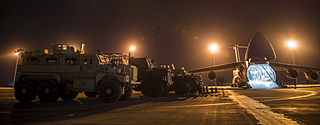
The 385th Air Expeditionary Group is a provisional United States Air Force unit assigned to Air Mobility Command to activate or inactivate as needed. It was last known to be stationed at Incirlik AB, Turkey. It is currently a tenant unit of the 379th Air Expeditionary Wing at Al Udeid Air Base, Qatar.

The 490th Missile Squadron is a United States Air Force unit. It is assigned to the 341st Operations Group, stationed at Malmstrom AFB, Montana. The 490 MS is equipped with the LGM-30G Minuteman III Intercontinental ballistic missile, with a mission of nuclear deterrence.
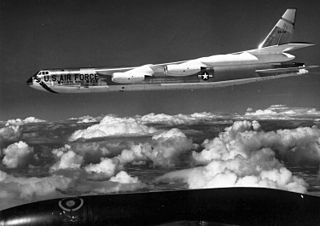
The 864th Bombardment Squadron is an inactive United States Air Force unit. Its last assignment was with the 494th Bombardment Wing at Sheppard Air Force Base, Texas, where it flew Boeing B-52 Stratofortresses under Strategic Air Command. It was inactivated on 2 April 1966.

The 13th Strategic Missile Division is an inactive United States Air Force unit. Its last assignment was with Fifteenth Air Force, based at Francis E. Warren Air Force Base, Wyoming. It was inactivated on 2 July 1966.
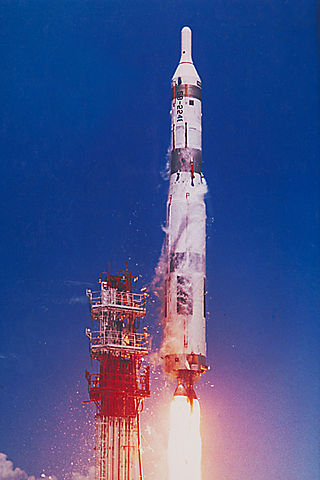
The 850th Strategic Missile Squadron is an inactive United States Air Force unit. It was last assigned to the 44th Strategic Missile Wing at Ellsworth Air Force Base, South Dakota, where it was inactivated on 25 March 1965. The squadron was first activated in 1943 as the 850th Bombardment Squadron. After training in the United States, it deployed to the European Theater of Operations and participated in the strategic bombing campaign against Germany. Following V-E Day, the squadron returned to the United States, where it was inactivated in November 1945.
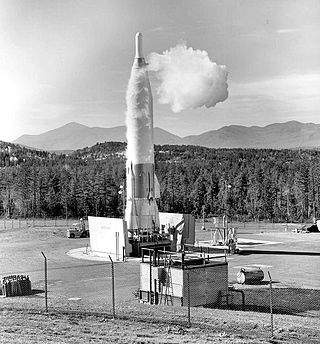
The 556th Strategic Missile Squadron is an inactive United States Air Force unit. It was last assigned to the 820th Strategic Aerospace Division at Plattsburgh Air Force Base, New York, where it was inactivated in 1965 with the withdrawal of the Atlas missile from operations.

The United States Space Force's 392d Combat Training Squadron was an intercontinental ballistic missile training unit at Vandenberg Air Force Base, California. Its first predecessor was the 592d Bombardment Squadron, which trained aircrews on Boeing B-17 Flying Fortresses during World War II. Its second predecessor was the 392d Missile Training Squadron, which conducted training, primarily for Royal Air Force launch crews, on the PGM-17 Thor missile at Vandenberg from 1958 to 1963. The two squadrons were consolidated in 1985 and activated again in 1993 to train missile crews at Vandenberg. The squadron was inactivated in 2010.

The 725th Strategic Missile Squadron is an inactive United States Air Force unit. It was last assigned to the 451st Strategic Missile Wing at Lowry Air Force Base, Colorado, where it was inactivated on 25 June 1965.

The 724th Strategic Missile Squadron is an inactive United States Air Force unit. It was last assigned to the 451st Strategic Missile Wing at Lowry Air Force Base, Colorado, where it was inactivated on 25 June 1965.

The 579th Strategic Missile Squadron is an inactive United States Air Force unit. It was last assigned to the 6th Strategic Aerospace Wing at Walker Air Force Base, New Mexico
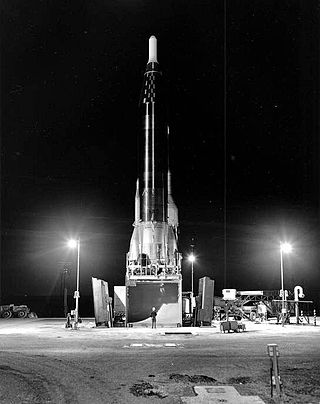
The 578th Strategic Missile Squadron is an inactive United States Air Force unit. It was last assigned to the 96th Strategic Aerospace Wing at Dyess Air Force Base, Texas, where it served from July 1961 until it was inactivated as part of the phaseout of the SM-65F Atlas intercontinental ballistic missile on 25 March 1965.

The 577th Strategic Missile Squadron is an inactive United States Air Force unit. It was last assigned to the 11th Strategic Aerospace Wing, stationed at Altus Air Force Base, Oklahoma.
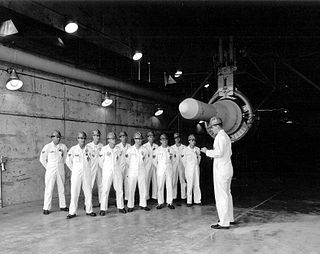
The 565th Strategic Missile Squadron is an inactive United States Air Force unit. It was last assigned to the 389th Strategic Missile Wing at Francis E. Warren Air Force Base, Wyoming, where it was inactivated on 25 March 1965. The squadron was equipped with SM-65D Atlases and was the second Strategic Air Command Intercontinental ballistic missile squadron to go on nuclear alert status.

The United States Air Force's 394th Strategic Missile Squadron was an intercontinental ballistic missile that operated the LGM-30 Minuteman and LGM-25C Titan II missiles at Vandenberg Air Force Base, California.

The 395th Tactical Missile Squadron is a United States Air Force unit. It has not been active under that name.

Space Delta 1 is a United States Space Force unit responsible for space training. It runs the Space Force's basic military training, weapons school, and other advanced training courses and exercises. It was established on 23 August 2021 following the establishment of the Space Training and Readiness Command, the field command to which it reports. It is headquartered at Vandenberg Space Force Base, California.





























